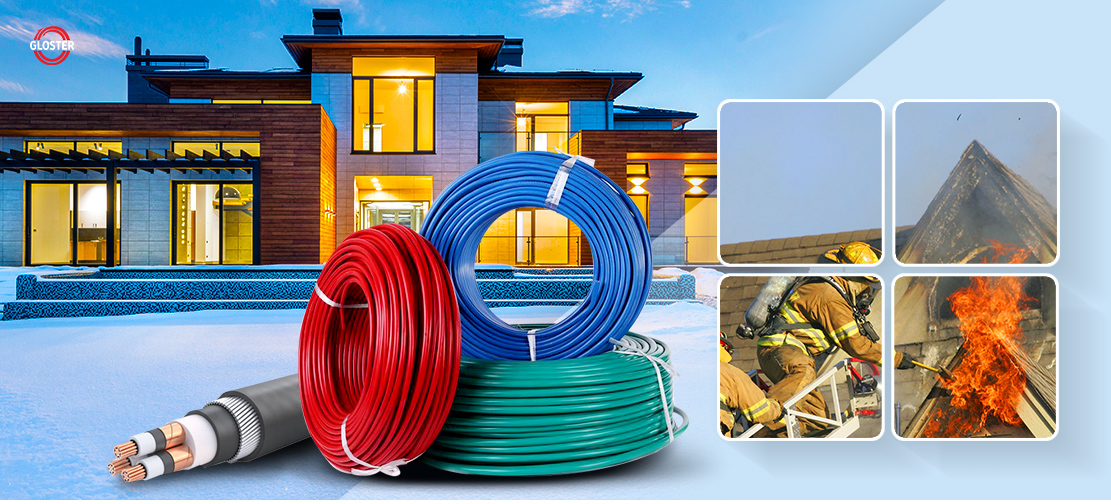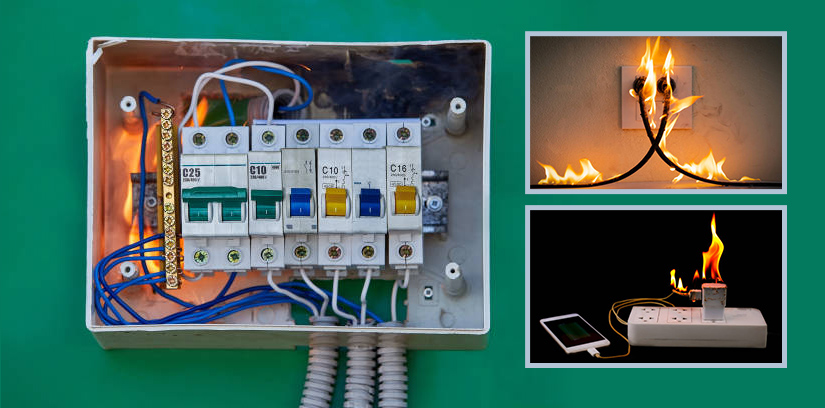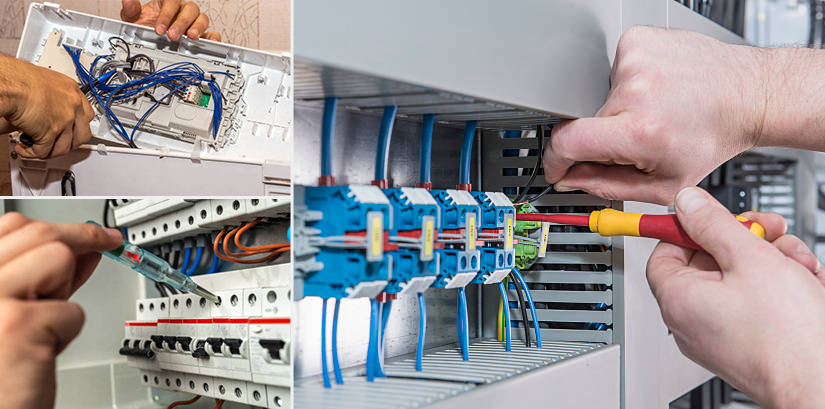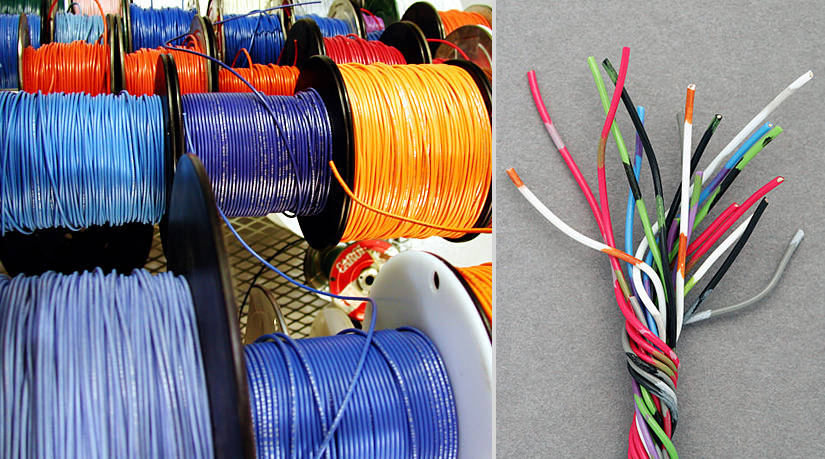
Best Practices to Safe Guard Your Home from Electrical Mishaps
Electricity has become one of the basic needs for survival in the modern world. With it; comes the electrical hazards or mishaps due to poor building design and negligence by builders and enthusiastic homeowners. Faulty or damaged wiring, electrical outlets close to water, heavy covering of wires, poorly insulated power tools, overloading, and use of old appliances are some of the common electrical hazards we frequently encounter at home.
By following best practices throughout the building design, electrical system installation, and post-maintenance, we can de-risk the home from any electrical danger. It helps us comply with electrical regulations, safe electrical equipment installation, and identify and avoid any potential lurking electrical mishap.
Gloster Cables, one of the leading wire and cable manufacturers, offers a wide range of products under its domestic segment. The organization follows international manufacturing and safety standards to provide the highest quality products. The company is continuously spreading awareness about electrical hazards and how to follow best practices to curb them.
Tips to Avoid Electrical Disasters at Home

Identification and implementation of electrical safety best practices start from electrical planning. Each building has a unique electrical design requirement, determined by the customer's demand and the building’s structure. So, below are the different stages of electrical planning for residential buildings.
1. General and Specialized Electrical Requirement
General electrical requirements are receptacle outlets in a house such as tv points, internet, and satellite cable connections. Specialized equipment like microwave ovens, photocopiers, ac, etc., require separate circuitry and unique grounding methods. While planning and installing such electrical equipment, we need to take precautionary measures.
Outlets at a safe distance from conductors or water source
Electrical outlets near the water source or another conductor are a potential hazard. Therefore, we should use ground-fault circuit interrupter (GFCI) outlets. It can disrupt electricity where it is necessary.
Different voltage switches and power plugs
Appliances like washing machines, air conditioning, heater, and grinder have different power requirements. So, we need to use separate power plugs and voltage switches and make provisions for wiring requirements. Some standard power plugs required for them are 5A, 6A, 12A, and 15A.
2. Develop Lighting System Design
Lighting systems are complex and have a highly detailed requirement, incorporating energy-saving technologies. It includes all the interior and exterior lighting fixtures and their control.
Design your lighting system in an oriented manner
Most houses require LED lighting because of the false ceiling. We plan for the LED requirement in cupboards, almirahs, bathrooms, side or doors, false ceiling, etc. Get your complete electrical plan approved and finalized before the commencement of electrical finishing to get designed in an oriented manner.
3. Electrical Distribution System
Planning of electrical distribution system is crucial to classify and diffuse the electrical wiring throughout the house. We should calculate the total electrical demand based on the individual electrical system. Some basic safety we should take while planning electrical distribution systems are:
Use of ELCB and right size of fuses
ELCB, an earth-leakage-circuit-breaker, helps control the electric circuit and power input required in a house. Fuses provide a good amount of security from electrical surges and short-circuit. We should plan the number of fuses, specifications according to the circuit, usage location, and other details like the number of fuses to be switched off in the case of short-circuiting.
4. Electric Installation
After electrical planning, the wiring and final installation of electrical equipment such as switchboards, lights, receptacles, HVAC systems take place.
Use of correct sized wires and cables

Electrical wires and cables come in different sizes. It defines their specific properties, purpose, and areas to use them. Use of wrong sized wire may cause short-circuit, overheating, short of fuse, etc.
Installation of surge protectors
Install surge protectors at your home, an economical way to provide voltage spike protection. Its circuit board regulates the power and ensures the right amount of power flow through the equipment by blocking or grounding. Use surge protectors with a minimum of 600 ratings for maximum protection.
Childproof your plug points
We should turn our standard plugs into childproof ones, using outlet caps and plugs, self-closing outlet covers, tamper-resistant receptacles, etc. It will reduce the risk of an electric shock and make our home child safe.
Safety measures to be followed post electrical installation
In addition, to these protective measures at the time of electrical planning and installation, we must continuously practice safety measures while living at home to avoid any electrical mishap.
Avoid overloading outlets
We should not overload any electrical outlets, as it may lead to short-circuit, overheating, and fire hazards. Avoid using extension cords for charging high-current devices like heaters, microwaves, etc.
5. Regular Cord Inspection
Inspection of cords regularly for any cuts, cracks, and damage can reduce the chances of power surges or serious consequences. Get them repaired or replaced by a qualified electrician, and always use wires of high quality and safety standards.
Careful storage and replacement of lightbulbs
Lightbulbs stored near flammable substance is hazardous, so store them judiciously. Don’t change them with your wet hands to avoid any electrical shock.
Selecting the Right Type of Wires and Cables

Wires and cables are the channels of the electrical distribution system, so we must select the correct wires and cables based on their size, sheathing, and color code.
The size of the wire defines its current carrying capacity, voltage regulation, and short-circuit rating. Sheathing and insulation of wires and cables; denote its wire size, the material used, number of conductors, current-carrying rating, and other properties. Cables are color-coded to indicate their size and amperage rating. Here is the list of some types of wires and cables that will guide you with your home application.
Solid wire for higher frequencies - Solid wire is a single conductor, either bare or color sheathed. These wires provide lower resistance and are suitable for higher frequencies like wiring breadboards.
Standard wire provides high resistance - Standard wires are a bunch of thin wire strands twisted together in the form of a large conductor. Because of their high flexibility, we can use them where high resistance gets needed in metal fatigue. Use it for connecting circuit boards, AC cords, etc.
UF (Underground Feeders) cables for wet location - UF cables are non-metallic cables specifically designed for wet location and direct burial in the ground. We can use them for outdoor fixtures, like lampposts. It carries very high voltage, and we may use it in major circuit wiring.
NM cables for interiors - NM cables are suitable for interior wiring in dry locations such as outlets and light fixtures. It comes in different sizes and color codes, like 6-gauge, 8-gauge, 10-gauge, white sheathing (14-gauge conductor), yellow sheathing (12-gauge conductor), etc.
THHN and THWN wire for unfinished areas short exposed runs - THHN/THWN wires are single conductors with color-coded insulation. These wires are most common in the garage or basement. And wiring connections for water heaters and garbage disposers.
When It’s Your Home - Safety is Above All
Home is the place where we spend most of our time. So, its safety is of utmost importance. We must be aware of the electrical risks, follow safety guidelines, and take pro measures to avoid any electrical surge and accident.
Gloster Cables manufactures high-quality wires and cables for different home applications with international safety standards. The product development process at Gloster adheres to ISO 9001:2005 quality standards and has got accredited by DNV.
The experience of more than 25 years and advanced infrastructure helps the organization understand the pain points of the home electrical hazards and bring innovative and safe solutions to deal with them.
CONTACT US
